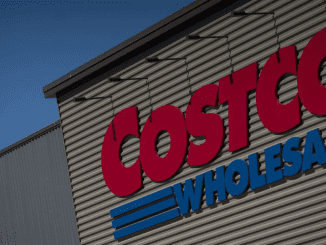Lego, the iconic toy brand known for its colorful interlocking bricks, has been a staple in households worldwide for decades. But while nearly everyone can recognize Lego products, many are only now discovering the meaning behind the brand’s name. Social media has been abuzz with reactions as people express surprise and fascination over the clever origin of the term “Lego.”

Credit: Alamy
Let’s dive into the history of Lego and uncover the deeper meaning behind its name, along with a look at how the company grew from a small carpenter’s workshop to a global toy empire.
The Surprising Origin of the Lego Name
Many people are just learning that the name Lego is derived from the Danish phrase “Leg Godt,” which translates to “Play Well.” This phrase perfectly encapsulates the company’s mission to provide high-quality toys that encourage creativity and playful learning. What’s even more fascinating is that when Lego’s founder, Ole Kirk Kristiansen, chose this name, he had no idea that in Latin, the term “Lego” also means “I put together.” This coincidence adds an extra layer of meaning to the brand, especially since the bricks are all about assembling and constructing.
One social media user reacted by saying, “Cool little fact,” while another admitted, “I had no idea about that.” A third commenter, who is a new Lego collector, shared, “Cool, I didn’t know that being a new Lego collector.”
The Humble Beginnings of Lego
Lego’s story begins in 1932 when Ole Kirk Kristiansen, a Danish carpenter, started a small workshop in the town of Billund, Denmark. Initially, Kristiansen focused on crafting wooden toys and household items. However, it wasn’t until the late 1940s that he saw the potential in plastic as a material for toy making.
In 1949, Lego began producing plastic interlocking bricks, which they initially called “Automatic Binding Bricks.” Kristiansen had a vision for these simple yet innovative bricks and famously told his sons, “Have you no faith? Can’t you see that if we do this right, we can sell these bricks all over the world?” His belief in the product paid off, as the automatic binding bricks evolved into what we now know as Lego Bricks in 1953.
Lego’s Journey to Becoming a Global Phenomenon
Over the years, Lego has transformed from a small family-run business into a global powerhouse. Recognized as the ‘Toy of the Century’ by multiple authorities, Lego’s appeal has only grown stronger with time. The toy company is renowned for its ability to inspire creativity, problem-solving, and imaginative play in children and adults alike.
Lego’s global success didn’t just come from its bricks. The company has continuously innovated, whether it’s through their creative playsets, partnerships with popular franchises like Star Wars, or advancements in sustainability.

In recent years, Lego introduced its first sustainable bricks made from plant-based materials, a step toward reducing its environmental impact. Moreover, Lego launched a groundbreaking initiative with Lego Braille Bricks, designed to help children with visual impairments learn through play. These efforts showcase Lego’s commitment to innovation, education, and inclusivity.
Would Lego Be as Successful Without Its Iconic Name?
While the brilliance of Lego’s products speaks for itself, one can’t help but wonder if the company’s simple yet catchy name played a role in its success. The brand’s name is synonymous with creativity, quality, and fun—all elements that resonate with consumers of all ages.
Ole Kirk Kristiansen considered other names for his company, including “Legio,” which means “Legion” in Latin. While “Legio” would have emphasized the vast possibilities of building with Lego, it didn’t quite have the same playful and childlike charm as “Lego” does. Kristiansen’s decision to stick with “Leg Godt” ultimately paid off, as the name perfectly embodies the brand’s focus on high-quality play and the development of children’s minds.
The Enduring Legacy of Lego
Since 1936, when Lego officially became the company’s name, its core mission has remained the same: to inspire play and creativity. Over the years, the iconic Lego brick has undergone various makeovers, but the concept has remained unchanged. The beauty of Lego lies in its simplicity—whether it’s a child building their first house or an adult creating complex architectural structures, the possibilities are endless.
Lego’s ability to evolve with the times while maintaining its core values has ensured its lasting success. As technology advances, Lego continues to stay relevant, not just as a toy company but as a cultural icon. Its foundation may be rooted in a simple Danish phrase, but its impact spans across generations and borders.

The Role of Social Media in Spreading the Word
The internet and social media platforms have played a significant role in educating people about the origins of well-known brands, and Lego is no exception. As people learn about Lego’s name and history, they’re often compelled to share their newfound knowledge, sparking conversations and fueling the brand’s ongoing popularity.
Many users have taken to platforms like Twitter and TikTok to express their surprise at learning the origin of the Lego name. This viral spread of information helps keep the brand relevant and top of mind for both long-time fans and new collectors alike.
Conclusion: A Legacy Built on Play and Innovation
It’s no wonder people are fascinated by the meaning behind Lego’s name. While many might have grown up playing with the iconic bricks, few knew that Lego stands for “Play Well” in Danish. The brand’s name, much like its products, embodies creativity, quality, and fun.
As Lego continues to innovate and inspire, its rich history and thoughtful branding remind us of the power of simple ideas. After all, Lego—both the name and the product—is a testament to how something small can spark endless possibilities.
Did you know what Lego stands for? Let us know in the comments below!


